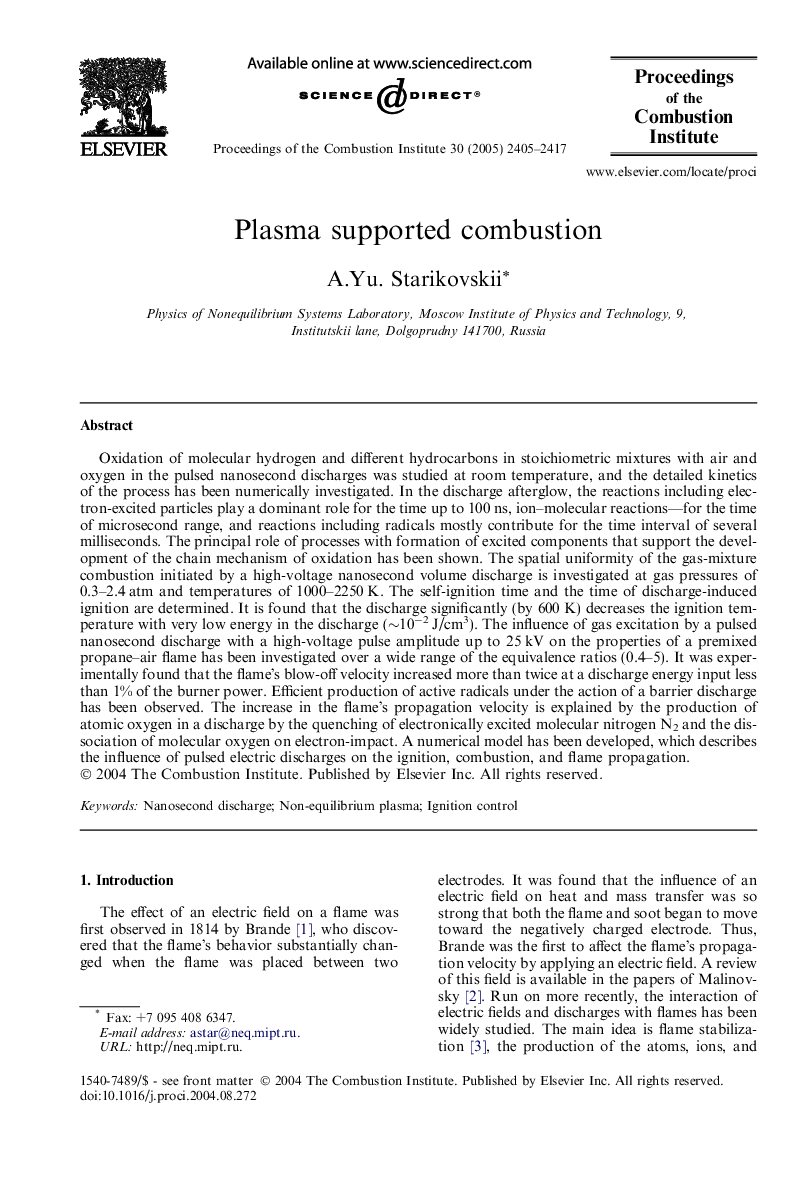| Article ID | Journal | Published Year | Pages | File Type |
|---|---|---|---|---|
| 240987 | Proceedings of the Combustion Institute | 2005 | 13 Pages |
Oxidation of molecular hydrogen and different hydrocarbons in stoichiometric mixtures with air and oxygen in the pulsed nanosecond discharges was studied at room temperature, and the detailed kinetics of the process has been numerically investigated. In the discharge afterglow, the reactions including electron-excited particles play a dominant role for the time up to 100 ns, ion–molecular reactions—for the time of microsecond range, and reactions including radicals mostly contribute for the time interval of several milliseconds. The principal role of processes with formation of excited components that support the development of the chain mechanism of oxidation has been shown. The spatial uniformity of the gas-mixture combustion initiated by a high-voltage nanosecond volume discharge is investigated at gas pressures of 0.3–2.4 atm and temperatures of 1000–2250 K. The self-ignition time and the time of discharge-induced ignition are determined. It is found that the discharge significantly (by 600 K) decreases the ignition temperature with very low energy in the discharge (∼10−2 J/cm3). The influence of gas excitation by a pulsed nanosecond discharge with a high-voltage pulse amplitude up to 25 kV on the properties of a premixed propane–air flame has been investigated over a wide range of the equivalence ratios (0.4–5). It was experimentally found that the flame’s blow-off velocity increased more than twice at a discharge energy input less than 1% of the burner power. Efficient production of active radicals under the action of a barrier discharge has been observed. The increase in the flame’s propagation velocity is explained by the production of atomic oxygen in a discharge by the quenching of electronically excited molecular nitrogen N2 and the dissociation of molecular oxygen on electron-impact. A numerical model has been developed, which describes the influence of pulsed electric discharges on the ignition, combustion, and flame propagation.
